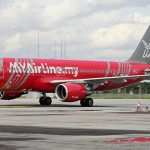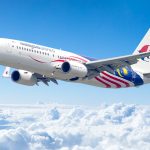By The Malketeer
In the volatile and competitive world of aviation, where success can be as elusive as a tailwind on a stormy day, MYAirline’s sudden suspension of operations less than a year after its launch stands as a stark reminder of the delicate interplay between branding, marketing, and the unforgiving realities of the airline industry.
The suspension was a rude awakening for hundreds of unsuspecting passengers who arrived at the Kuala Lumpur International Airport’s Terminal 2 (KLIA 2), only to find closed check-in desks. With nearly 40 flights scheduled for October 12 and tickets worth over RM20 million sold to more than 125,000 passengers, MYAirline’s abrupt exit left passengers in the lurch and regulators scrambling to respond and wage the usual rhetoric of blame game.
Lessons For Aviation Industry Regulators
Regulators in Malaysia are divided between the Malaysia Aviation Commission (Mavcom), responsible for economic matters and ensuring airlines’ financial fitness, and the Civil Aviation Authority of Malaysia (CAAM), responsible for technical requirements and safety. While MYAirline was initially granted an air service licence, questions linger about whether it ever met the necessary financial requirements, considering its problematic financial history and ambitious business plans that many industry observers deemed unrealistic and flawed from the onset.
So, what lessons can regulators draw from the collapse of MYAirline?
First and foremost, the need for ongoing monitoring of airlines’ financial health. Regulators should not rely on airlines to voluntarily disclose their financial difficulties. It’s imperative that they actively engage with airlines, conduct regular financial assessments, and require airlines to submit quarterly financial reports.
Furthermore, the issuance and maintenance of operating licences should be stringent. Airlines should be required to demonstrate sufficient capital to ensure continuous operations. It should not be acceptable for airlines to operate for months after essentially running out of capital, relying on future bookings to meet current financial obligations. Such lax oversight risks not only leaving passengers stranded but also harming Malaysia’s tourism sector and its overall brand reputation.
Pitfalls in Branding and Marketing Strategies
As we further delve into the intriguing saga of MYAirline, we unearth a treasure trove of insights into how an airline’s branding and marketing strategies can soar to great heights but also crash and burn without careful navigation.
At first glance, MYAirline was the poster child for the power of a well-crafted brand. With a vibrant, eye-catching logo and an unwavering commitment to making air travel more accessible, it quickly captured the hearts of travellers.
Passengers were lured by the siren call of affordable fares, and the promise of exploring far-flung destinations. It seemed like a revolution in the making, poised to redefine the industry. However, beneath the veneer of glossy marketing campaigns and catchy slogans, MYAirline’s tale is one of shattered dreams and a stark misalignment between brand promises and financial realities.
The airline’s dramatic suspension was more than just an operational hiccup; it was a branding and customer trust catastrophe. It sent shockwaves not only through the industry but also led to millions of ringgit worth of tickets rendered null and void, leaving passengers and stakeholders in a state of disbelief.
MYAirline had soared to remarkable heights, capturing a considerable chunk of Malaysia’s domestic market, with nearly 2 million passengers flown within just 10 months. Its ambitious plans included ordering over 100 new aircraft and going public. It appeared to be riding high on the wings of success. But beneath the surface, the airline grappled with financial distress, failing to meet crucial obligations like employee salaries, airport fees, and more.
Little Room for New Entrants to Survive
In an overcrowded marketplace where AirAsia, Malaysia Airlines, and Batik Air Malaysia have a strong foothold, there’s little room for new entrants to survive in Malaysia.
Herein lies the essence of the branding and marketing missteps. An airline’s brand must accurately mirror its financial health and operational capabilities. MYAirline’s brand painted a picture of optimism and lofty ambitions, but it failed to resonate with the financial realities of the company, leading to disappointed customers and disillusioned stakeholders.
One of the most glaring misjudgments in MYAirline’s marketing strategy was its belief that it could exploit the supposed vulnerabilities in AirAsia, a major player in the region, following the pandemic. The airline underestimated its competition, assuming that AirAsia was in a weakened state, making it vulnerable to their challenges. However, AirAsia, despite its hardships, countered MYAirline’s moves with aggressive fare reductions and capacity increases.
AirAsia’s strategy was crystal clear: defend its market turf at all costs, even if it meant operating some routes at a loss. It dumped fares and capacity on all MYAirline routes, rendering MYAirline’s fares too low to cover its operational costs.
Navigating Turbulent Skies
From a branding and marketing perspective, MYAirline should have conducted a more realistic assessment of the competitive landscape and ensured that its marketing strategies were grounded in the market’s actual dynamics. Ignoring the strength of a well-established competitor in the industry was a grave marketing miscalculation that ultimately led to MYAirline’s early demise.
In the end, despite its optimistic branding and marketing efforts, MYAirline’s operational reality simply did not align with the grand promises of its brand. It failed to secure the essential investments, adapt to the challenges, or secure vital new routes in a timely manner.
The MYAirline narrative serves as a poignant reminder that branding and marketing strategies must be in sync with the financial health and operational capabilities of a business. It underscores the significance of transparency and authenticity in brand messaging and the necessity of comprehensive market research and a clear understanding of the competitive landscape.
In an industry where the dance between branding and marketing is inextricably linked with the harsh realities of aviation economics, it’s a cautionary tale that beckons all marketers and brand builders to navigate the turbulent skies with a careful and informed approach. The price of complacency in branding can indeed be a very heavy one to pay. A reminder that in this ever-volatile arena, marketing must never be untethered from operational realities.
MARKETING Magazine is not responsible for the content of external sites.









